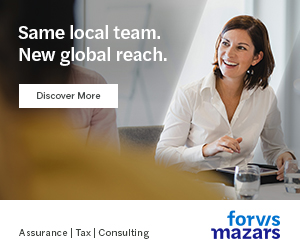Trends to watch in 2023

At the Business Record, one of our main goals is to help leaders see what may be coming, learn about something they hadn’t thought of or think differently about an issue. Again this year, we asked audience members to share a trend they see coming to their industry or community in 2023. Here’s what they had to say. (Responses have been lightly edited and condensed for clarity.)
— Emily Barske, editor
Strong M&A opportunities should continue into 2023
Tom Cavanagh – vice president and shareholder, BCC Advisers
It is an interesting time in the [mergers and acquisitions] environment. On the one hand, you have sellers that are struggling to communicate earnings expectations given supply chain challenges, rising wages, inflation and geopolitical uncertainty. Normally this uncertainty would create roadblocks to achieving agreement on valuation between buyers and sellers, causing a reduction in M&A activity. However, since buyers still have strong balance sheets and an inability to grow organically due to the lack of employees, they are aggressively seeking acquisitions as a means to achieving desired growth results. We have seen a substantial uptick in businesses desiring to proactively seek out acquisitions despite pending fears of a recession in 2023. If business owners are willing to be a bit flexible with price, and particularly structure, 2023 should continue to present excellent opportunities to realize attractive ownership transitions.
CFOs will give local banks a second look
Jim Plagge – president and CEO, Bank Iowa
Through the end of November, loans in the U.S. were up 2%. While the continuation of that uptick is far from certain, the Fed is making moves to slow inflation and stave off a recession.
When financial institutions have a larger percentage of their deposits loaned out to their customers, and credit demand is still high, all banks need to get creative, but especially local banks. We expect to see more community-based financial institutions get creative to bring in deposits from area businesses.
Des Moines-based operations with cash should keep this in mind as they work to diversify their liquidity strategies. Local banks will put that money right back into the communities those businesses call home.
Using health care dollars to address social determinants of health
Mike Anderson – CEO, Mom’s Meals
Access to nutritious foods by our state’s most vulnerable populations continues to be a challenge. The lack of nutritious food is one of the many social determinants of health that need to be addressed to improve the lives of Iowans. To make an impact on food insecurity, it will take collaboration with state, private entities, health care providers, community-based organizations, government payors, health plans and local resources. The Iowa Stops Hunger Pilot Program is a step in the right direction and will serve as a model for other states. Iowa can pioneer how we use health care dollars to address social determinants of health and improve health outcomes for underserved individuals or those with chronic health conditions by providing medically tailored meals. We have seen programs similar to this in other states reduce hospitalizations and emergency department visits by 50%. We all must work together to promote efficient and effective use of existing program resources to eradicate community-level hunger.
Emergence of digital inclusion and equity program
Todd Kielkopf – co-founder, Community Broadband Action Network
The COVID-19 pandemic accelerated the adoption of digital technologies to mitigate participation limitations in our society, democracy and economy as identified in the Greater Des Moines Partnership Central Iowa Broadband Internet Study. The state of Iowa and regional providers are planning and investing record amounts to improve broadband access. Forthcoming resources will transition communities’ focus to how to increase adoption and use rates within targeted populations, many of whom have affordability and baseline digital skill challenges. An Iowa pilot project is currently underway to develop effective frameworks to expand regional digital inclusion programming, particularly in more rural areas.
Cities partnering for housing growth
Kris Saddoris – vice president of development, Hubbell Realty Co.
As cities focus in 2023 to continue to provide housing options in their communities to support population growth, we are seeing many municipalities working with the private sector to create unique housing options. Construction and development costs continue to rise, requiring creative solutions to continue to provide opportunities for cities to grow through increased housing choices.
Successful communities are proactively partnering to a higher degree today to support a diverse array of housing priorities. For example, Waukee recently purchased ground using their low- and moderate-income or tax increment financing funds to help support the creation of a mixed-income housing subdivision as a creative solution to support affordable housing development. The city of Grinnell is one of many smaller Central Iowa communities partnering to ensure that housing lots are developed in their city and available in 2023 for new housing starts.
Other cities are partnering with the nonprofit sector to provide unique housing possibilities in existing neighborhoods. Des Moines has worked with HOME Inc. as the developer, as well as AARP, InvestDSM and Neighborhood Finance Corp. to help construct an accessory dwelling unit in the Highland Park/Oak Park neighborhood, introducing a more economic housing option while meeting the needs of older residents as well as multigenerational buyers.
Pharmacists will help more patients in many more ways than ever before
Michael Wolnerman – vice president, OneroRx
We will see vaccinations, access to prescription medication, availability of independent pharmacies in rural pharmacy deserts through telepharmacy be major areas of focus. Providing medicine to underserved populations with the help of 340B Services and keeping the independent pharmacy alive instead of closing down will be important.
Leveraging consultants for project engagement, and working as a consultant for midcareer growth and beyond
Rachel Formaro – CEO, Blu Pagoda LLC
Our company has grown through our clients benefiting from the flexibility of working with expert consultants with varied career experience. Individuals who have spent time as employees in an industry are in turn looking to the consulting path as a way to grow and have flexibility of when, where and how they work.
Cybersecurity trends and threats to watch in 2023
Megan Soat – director of security services, Pratum
In an ever-changing technology world, cybersecurity threats and trends will continue to evolve. Looking ahead to 2023, here are some trends and threats to watch for. Spoiler alert: Many cybersecurity professionals have been talking about these threats for several years.
Cloud security will become increasingly important.?Cloud storage and networking continues to grow. The rapid switch in 2020 to working from home should cement our understanding that the dispersed workforce is here to stay.
Targeting supply chains. By targeting companies that play critical roles in the activities of other businesses, such as raw materials suppliers or logistics firms, cybercriminals can grind an entire supply chain to a halt and apply mounting pressure to make victims meet their demands.
The rise of fileless malware. Because fileless malware does not require its victim to download any files, it is practically undetectable by most information security tools. Ransomware will continue to be utilized as part of these attack methods as well.
Employees will continue to be targeted. The human factor is a factor in more than?80%?of cyberattacks and will continue to be an “easy” vector for attackers. Companies must continue to focus on employee awareness and training when it comes to cybersecurity.
Growing compliance regulations in cybersecurity
Paul Schut – technology adviser, Marco Technologies Cation Retention Program
In 2022 the average cost of a ransomware breach was $4.54 million. Whether it is your customers, vendors or insurance providers, there will be a growing focus on how your business is being protected and preventing a cybersecurity incident. Expect to be asked to demonstrate what tools and frameworks are implemented to keep your data secure. If you don’t have these in place, you’ll be at risk of losing business and paying a premium for insurance rates. In addition to your business’s network, how secure are the partners you trust? For example, a simple spot check is confirming they are SOC 2 Type 2 compliant. The old Benjamin Franklin quote still applies to this point in that “an ounce of prevention is worth a pound of cure.”
Never normal
Alan Feirer – owner, trainer and consultant, Group Dynamic
We are starting to realize that not only are we never going back to the “old normal,” we don’t really have a “new normal.” Changes vary from place to place, industry to industry, and most importantly, person to person. Success will come for those who stop concerning themselves with “normal” and instead focus more on the needs of the immediate moment. This doesn’t mean we shouldn’t have long-term plans, but it does mean that vision, mission and decision-making processes need to be aligned for better in-the-moment decisions.
Professional development eclipsing salary for talent attraction and retention
Rowena Crosbie – president, Tero International Inc.
At a time when talent is the biggest concern for employers, money alone won’t win the race. Leaders have a lot of options to choose from in how they invest in talent. Will they pick compensation? Benefit programs? Perks? Helping employees grow and learn? More and more organizations are voting for learning and their investments are paying off.
Historically, training was provided to positively impact business performance. What has escaped attention, until now, is the positive impact of training on the individual.
Lack of career growth and development opportunities are among the top cited reasons employees quit their jobs. Employees who are very satisfied with their career development are more likely to stay.
Training demonstrates an organization’s commitment to employees and their careers. When employees see the investment made in them, it has a powerful impact on performance and motivation.
Professional development is rapidly eclipsing salary as the most effective way to attract and retain talent. Pay increases serve as a short-term fix. Developing employees delivers long-term value for employers and employees alike.
Engaging employees in an increasingly hybrid workforce
Tanya Fish – manager of employee experience solutions, ITA Group
Research shows that the hybrid workforce is here to stay. The pandemic shifted how many brands approach flexible working environments. Plus, Gen Z entered the workforce and is demanding more employers offer flexibility.
That said, research from McKinsey & Co. shows that personal relationships still matter for employees. To address employees’ needs and still support connections between employees and the brand, organizations are finding ways to go above and beyond traditional financial benefits. Employers are creating engaging employee experiences using platforms, apps and personalized communications. The multiple touchpoints motivate employees to perform and stay connected to each other, whether they’re in an office or working remotely. With combined financial benefits as well as creative employee experience programs, McKinsey & Co. found organizations achieved a 55% improvement in employee engagement.
Bottom line: We’re finding organizations that listen to their employees and act on their feedback are more employee-centric and better engage employees in a hybrid workforce.
Women in construction
Kathy Landeros – journeyman electrician A, IBEW Local Union 347
When I started working in this industry, there were very few women in the trades. Today, I see different opportunities for each individual.
Artificial intelligence and misinformation
Derek Zarn – director of communications and marketing, city of Urbandale
Misinformation has long been a problem, but it has become particularly prevalent in recent years due to the rise of social media and the ease with which false information can spread online.
Artificial intelligence and machine learning have made it easier for bad actors to create and spread deepfake videos, which are videos that have been altered to show people saying or doing things that they never actually did. Deepfake videos can be used to spread misinformation and sow confusion, and it is likely that we will see more of them in the coming year.
Political polarization and the use of social media as a tool for political campaigning have also contributed to the spread of misinformation. Interest groups have been known to spread false or misleading information in order to further their agendas, and social media algorithms often amplify this content, making it more visible to users.
It is important for individuals to be vigilant in checking the accuracy of information and seeking out credible sources. Misinformation is likely to continue to be a trend to watch in the upcoming year due to ongoing political polarization, and the rise of AI and deepfake technologies.
One-size-fits-all PR pitches are so last year
Liz Adelman – partner, AdelmanDean Group
Take time to really get to know journalists. Personalized pitches are more genuine and authentic. When you understand what journalists’ interests are and what beats they cover, you are more likely to obtain quality media coverage. Establishing a good working relationship with media members helps to create trust and establishes a solid working relationship.








